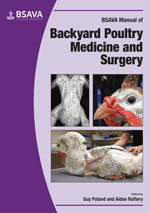
Full text loading...

For clinical staff, good handling of poultry is essential to enable meaningful examination and for the administration of treatment. This chapter places emphasis on minimizing stress and risk of injury during capture, handling, restraint and transport. The unique considerations involved in managing a hospital ward to accommodate poultry are also discussed.
Handling, transportation and hospitalization, Page 1 of 1
< Previous page | Next page > /docserver/preview/fulltext/10.22233/9781910443194/9781910443194.6-1.gif

Full text loading...








